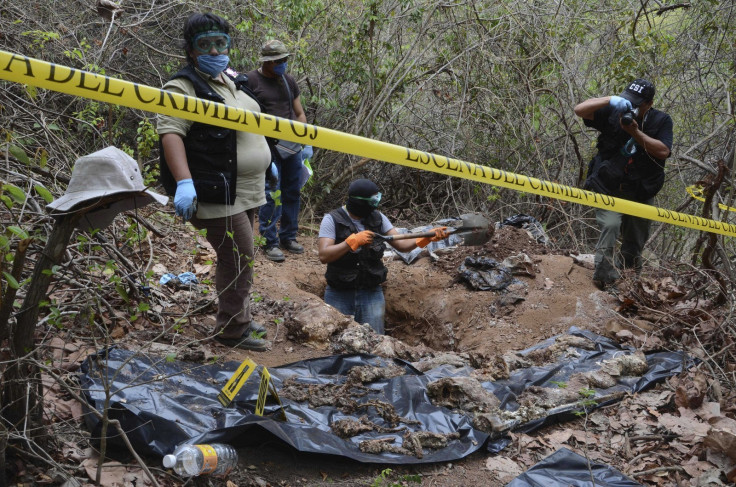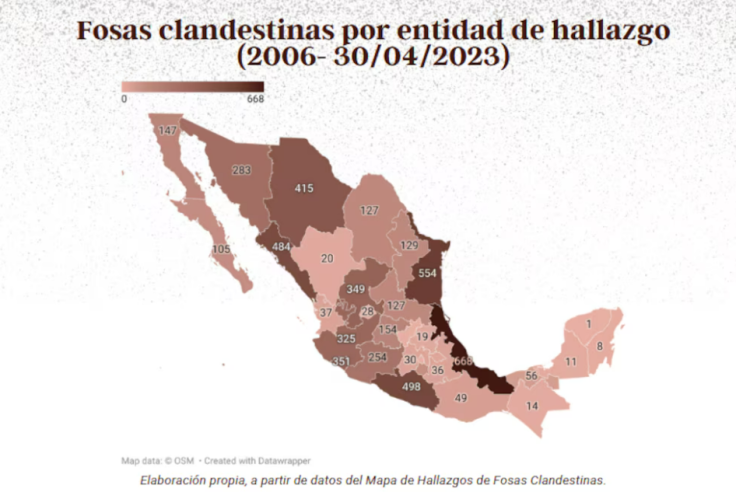
A group of volunteers from Guerreros Buscadores de Jalisco — a nonprofit organization dedicated to locating missing persons — reported the existence of unauthorized burial sites, or clandestine graves, in the municipality of San Pedro Tlaquepaque, a community located just south of Guadalajara, Jalisco's capital.
Members of the group alerted authorities of their discovery, which included human remains found inside improvised structures they described as "little caves," where victims were allegedly incinerated using tires as fuel. According to their accounts, the remains were exposed to the elements rather than buried.
During a Facebook live broadcast, members of Guerreros Buscadores de Jalisco condemned the lack of response from authorities despite having alerted municipal and state agencies about their discovery.
In the broadcast, volunteers displayed several bone fragments, confirming the remains were human. "You can clearly see molars, teeth, burned human remains, vertebrae, and parts of a skull," said one of the group's spokeswomen.
According to the public complaint filed by the group, Tlaquepaque municipal police arrived at the scene, collected the volunteers' details, and left shortly after.
"It's 9 p.m., and we're still waiting for the authorities who are supposed to be first responders," one woman said. "We notified the Jalisco Institute of Forensic Sciences — they have the report. But no one has shown up. We also alerted homicide and missing persons units, and yet we're out here in the middle of nowhere. This is unacceptable."
Sinaloa-based group makes similar discovery
Just last week, a volunteer group in the northern state of Sinaloa uncovered multiple clandestine graves in the municipality of Culiacán. Members of Sabuesos Guerreras discovered the remains of at least 12 people spread across seven separate graves.
"We were told there were bodies buried in secret... at first, they reported three, but we ended up finding more," said Belinda Aguilar, a member of the group.
According to Aguilar, some of the remains appeared to be recent, while others showed advanced signs of decomposition.
The Mexican government has stopped tracking clandestine graves
According to El País, the Mexican government has largely "given up" on tracking the number of clandestine graves discovered across the country. The outlet notes that the last official effort to maintain an up-to-date record came in 2023, when the .

That number has likely increased, as communities across Mexico continue to report new discoveries on a near-weekly basis.
For instance, in the northern state of Tamaulipas, members of the group Colectivo Amor por los Desaparecidos have identified more than 20 suspected sites this year in Reynosa, where criminal groups allegedly killed and incinerated their victims.
Amid the growing controversy surrounding the Izaguirre Ranch case in Teuchitlán, Jalisco, the federal government quietly disabled public access to the website that had tracked the locations of clandestine graves nationwide.
The now-inaccessible records showed that from Dec. 1, 2018, to April 30, 2023, a total of 2,863 sites were discovered. According to data collected by the Interior Ministry and cited by Infobae México, only Veracruz (668) reported more such graves than Tamaulipas (554) and Sinaloa (484).
© 2025 Latin Times. All rights reserved. Do not reproduce without permission.






